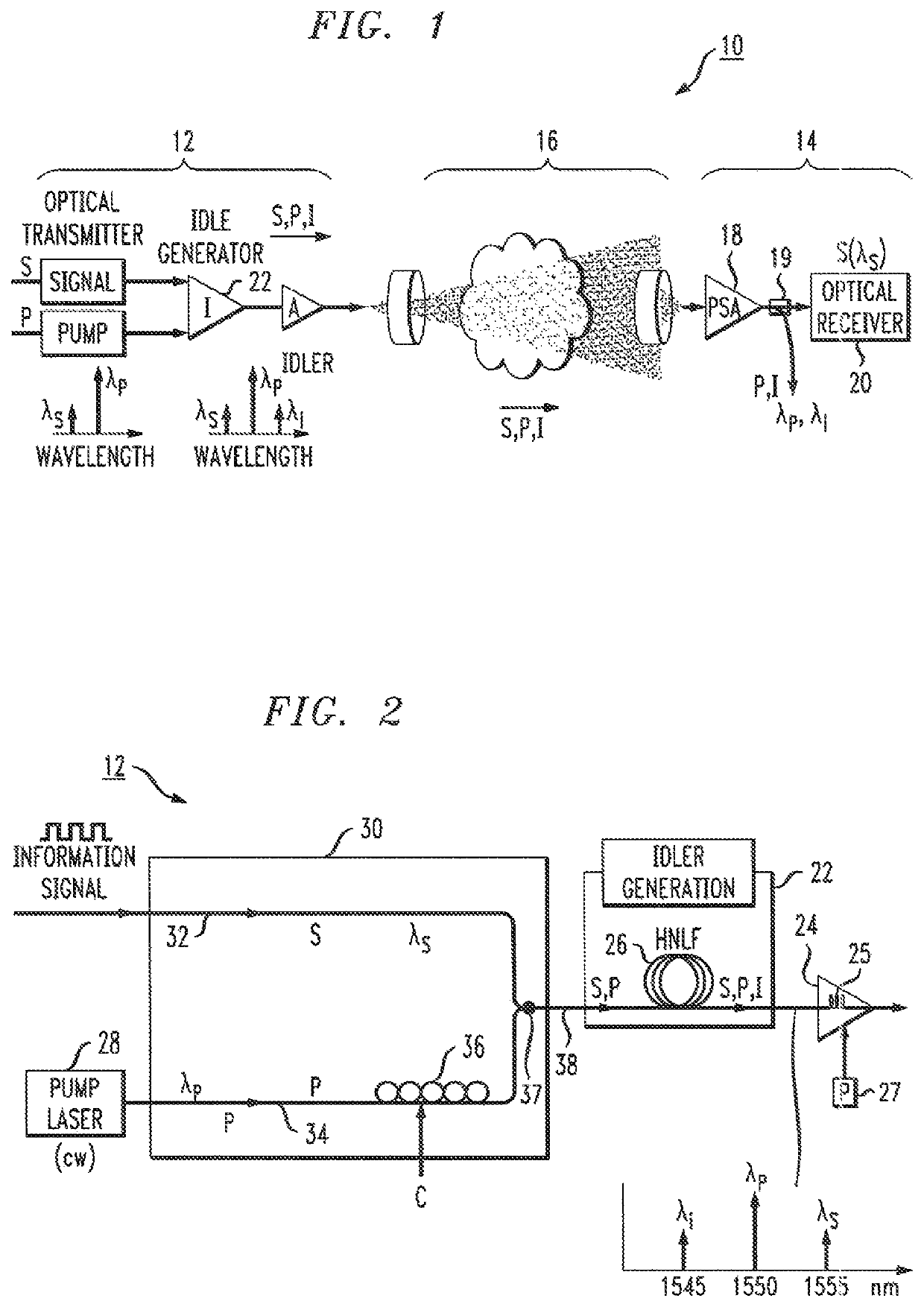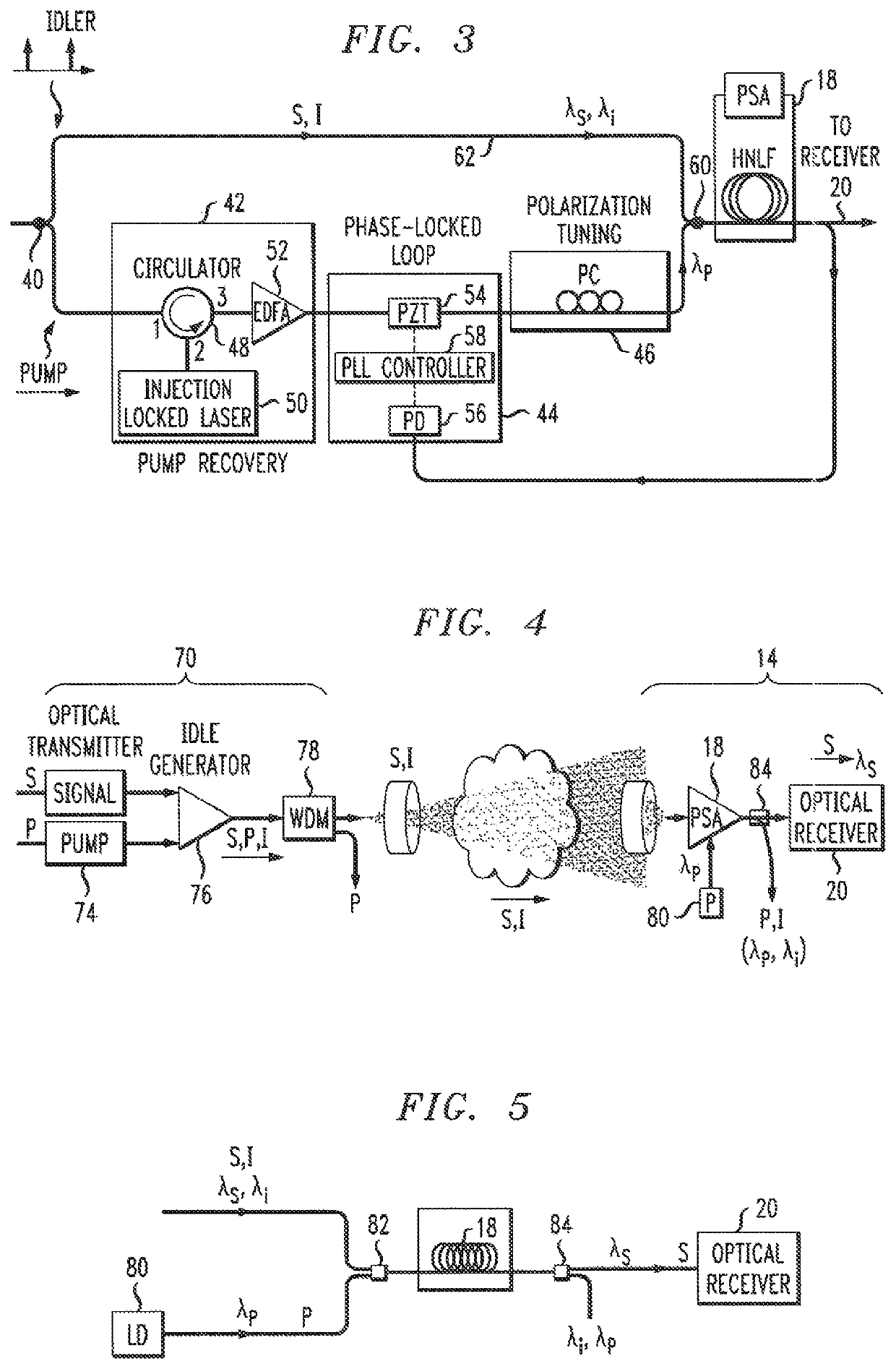Free-space optical communication links with improved sensitivity
a free-space optical communication and sensitivity technology, applied in the field of free-space optical communication systems, can solve the problems of fundamentally limited link sensitivity and inability to meet the requirements of a given application, and the cost associated with this approach is not always suitable for a given application
- Summary
- Abstract
- Description
- Claims
- Application Information
AI Technical Summary
Benefits of technology
Problems solved by technology
Method used
Image
Examples
Embodiment Construction
[0019]One of the essential aspects that dictates the capacity and reach of any FSO link is the system power budget. This, in turn, depends on several metrics including, but not limited to, the launch power available at the transmitter and the sensitivity of the receiver (the latter determined as a function of the given data information bit rate and modulation format). The resulting power budget thus determines the maximum allowable loss in the transmission link—and thus also in practice the reach of the link (i.e., the distance between the transmitter and receiver).
[0020]It is proposed in accordance with the present invention to utilize a PSA in conjunction with an optical receiver in an FSO link to improve the sensitivity of the receiver. By virtue of using a PSA at the receiver input, additional margin in the overall power budget of the FSO link is provided. Inasmuch as an FSO link does not experience the types of dispersions and nonlinearities associated with fiber-based systems,...
PUM
| Property | Measurement | Unit |
|---|---|---|
| wavelength λs | aaaaa | aaaaa |
| wavelength λs | aaaaa | aaaaa |
| wavelength λp | aaaaa | aaaaa |
Abstract
Description
Claims
Application Information
 Login to View More
Login to View More - R&D
- Intellectual Property
- Life Sciences
- Materials
- Tech Scout
- Unparalleled Data Quality
- Higher Quality Content
- 60% Fewer Hallucinations
Browse by: Latest US Patents, China's latest patents, Technical Efficacy Thesaurus, Application Domain, Technology Topic, Popular Technical Reports.
© 2025 PatSnap. All rights reserved.Legal|Privacy policy|Modern Slavery Act Transparency Statement|Sitemap|About US| Contact US: help@patsnap.com


